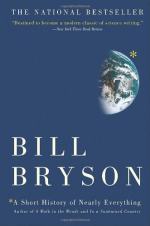
|
| Name: _________________________ | Period: ___________________ |
This test consists of 5 multiple choice questions, 5 short answer questions, and 10 short essay questions.
Multiple Choice Questions
1. Continental drift refers to:
(a) Continents drifting apart.
(b) Changing weather patterns.
(c) Unique cloud drifts over different continents.
(d) Tides affecting the shape of continents.
2. According to the Superstring Theory, the components making up protons, neutrons, electrons, and neutrinos are not regular particles, but instead are:
(a) Super-cooled forces.
(b) Super particles.
(c) Vibrating strings.
(d) Gravity pockets.
3. What massive bone belonging to a dinosaur was found in New Jersey in 1789?
(a) Hipbone.
(b) Thighbone.
(c) Shoulder blade.
(d) Collarbone.
4. The fact that Pluto has a moon was not discovered until:
(a) 1978.
(b) 1936.
(c) 1991.
(d) 1965.
5. About how many stars are visible to the naked eye from Earth?
(a) 6,000.
(b) 9,600.
(c) 500.
(d) 1,200.
Short Answer Questions
1. In a span of just 20 years, the number of known moons in the solar system grew from:
2. The Yucatan Peninsula of Mexico is thought to be the site of what?
3. Our universe is at least how many light-years wide?
4. In the 1960s, what did Bob Christiansen realize about Yellowstone National Park after observing NASA-supplied images?
5. A caldera is a:
Short Essay Questions
1. Where do earthquakes occur?
2. What explanation did James Hutton come up with to describe the phenomenon of seashell fossils frequently found on mountaintops?
3. When scientists first tried to grasp the idea of atoms, what did they disagree on?
4. Describe what happened to an enormous thighbone discovered in New Jersey in 1789.
5. Describe inner solar system asteroids.
6. Describe what happens in a supernova.
7. Describe what happened after the last supervolcano erupted on Earth. When did this happen?
8. Describe the protons, neutrons, and electrons of an atom.
9. Why does Bryson consider Pluto to be an oddity?
10. Explain Albert Einstein's theory of space curvature using a tennis ball and an ant.
|
This section contains 839 words (approx. 3 pages at 300 words per page) |

|




